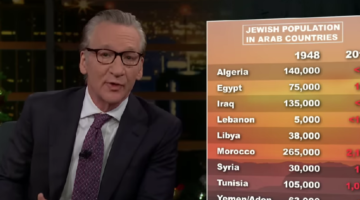This week’s parasha opens with one of the most important dates on the Jewish calendar, Yom Kippur (Vayikra 16). Immediately following the description of the Yom Kippur service the Torah discuss three specific Mitzvot (Vayikra 17, 18), the prohibition of eating blood, the Arayot, or sexual prohibitions, and Molech(1). Of all the Mitzvot the Torah could have placed after the laws of Yom Kippur why did the Torah pick these three? What is unique about these three seemingly unrelated laws and their relationship to Yom Kippur?
To better understand this question we need to appreciate the purpose of Yom Kippur. The Torah says, “For on this day He shall provide atonement for you to cleanse you; from all your sins before Hashem shall you be cleansed (16:30).” The goal of Yom Kippur is to allow Bnei Yisrael to stand before G-d in a sin free and spiritually pure state thereby returning to the spiritually high level of “standing before G-d” that Bnei Yisrael had once achieved. When did Bnei Yisrael previously reach this special level of “standing before G-d?” The answer is at Har Sinai, where the Jews joining together as Ish Echad b’lev Echad. It was only then when all of Bnei Yisrael were together that we merited this level of “standing before G-d.” However, as a result of the sin of the Golden Calf, and then later the sin of Nadav and Avihui(2) , Bnei Yisrael lost the privilege to “stand before G-d.” Yom Kippur(3) was the day that the Jews completed their atonement of the sin of the Golden Calf and the sin of Nadav and Avihui, and were once again privileged to “stand before G-d” like they had at Har Sinai.(4)
Let us further develop the link between Har Sinai and Yom Kippur. If we look at the Mitzvot immediately following Har Sinai, we can ask a similar question. Of all the Mitzvot that the Torah could have chosen to reinforce the lessons of Har Sinai why did the Torah choose what appears to three unrelated Mitzvot? The three Mitzvot that follow the episode of Har Sinai are (Shemot 20:19-23), one may not make idols of gold and silver, an alter must not be hewn with metal objects, and an alter requires a ramp and not stairs. The Kli Yakor explains the true symbolism behind these three laws. They allude to the ‘big three’ Mitzvot that one has to allow themselves to be killed for rather then transgress them. They are idolatry, murder, and adultery.(5) These Mitzvot are paramount to Judaism and are ideal reinforcements of the Ten Commandments.
With this we can now understand why the Torah placed after Yom Kippur the three laws of not eating blood, illicit relations, and Molech. These three laws also remind us of the ‘big three’ laws that one has to allow them self to be killed rather then transgress.(6) Yom Kippur is a return of the Jewish nation to the level they achieved at Har Sinai. Consequently, the Torah returns to the message of Har Sinai and records those laws that reinforce the Sinai message by alluding to the ‘big three’ Mitzvot. Just like in sefer Shemot the Torah reinforces the Ten Commandments with laws that allude to the ‘big three’ laws in Judaism, so to in sefer Vayikra the Torah reinforces the Yom KippurSinai experience will laws that allude to the ‘big three.’
The theme that Yom Kippur is a return to the level of Har Sinai before the sin of the Golden Calf and Nadav and Avihui continues to play out in the text itself. The Ramban explains that the laws in parshat Mishpatim are really a continuation and reinforcement of the Ten Commandments. Similarly, in parshat Kedoshim the Ramban (20:4), Chizkuni (20:2), and the Ibn Ezra (20:2) all explain how many of the laws mentioned reinforce the laws in the Ten Commandments.
Once the Jews have achieved atonement through Yom Kippur and returned to the high spiritual level that they had attained during the Sinai experience the Torah follows the procedure used in sefer Shemot of reinforcing the Ten Commandments through recording laws that symbolize the ‘big three’ and the Ten Commandments. Yom Kippur is not only a day were we can receive atonement for our sins, but is a day that offers us the opportunity to return the spiritual level that the Jewish nation achieved at Har Sinai. As we study these coming parshat in preparation for the Yom Tov of Shavout may we be privileged to return to this level of “Lifnai Hashem” before G-d, that we had previously experienced at Har Sinai.
Footnotes: 1. Molech is a form of idol worship where one sacrifices his oldest son, either by killing him or passing him through fire, in order that his other children should be blessed.
2 There is a strong relationship that plays out in the text showing how Yom Kippur is atoning for the both sin. For example, verse 1 informs us that these events transpired “after the Death of the two sons of Aaron”, Verse 3 commands “Aaron” to bring a “Calf” for an offering to recieve atonement for “Aaron’s” involvement in making the Golden “Calf.” Further proofs can be found in verse 2,4, as well as the usage or lack thereof of Aaron’s name.
3. Rashi, Shemot 24:29, explains that the Jews received the 2nd set of tablets on Yom Kippur signifying to the Jewish people that their repentance had been accepted.
4. The Yom Kippur of our times models the original Yom Kippur of the Torah. It allows us today to achieve the level of “standing before G-d” by atoning for our individual sins.
5. The connection between them is that idols of gold and silver refers to idolatry, Rashi explains that the metal is designed to be used for war and making weapons which are used to kill people and shorten their lives while the alter is meant to preserve life through atonement, and the reason for a ramp, Rashi explains, is a sign of modesty because with steps one’s undergarments become exposed when going from one step to the next, modesty is what prevents illicit relationships and adultery.
6. Not eating blood symbolizes Murder. A further allusion can be found in Vayikra 17:11+14 that explicitly links the soul with the blood, “Ki Dam Hu B’nefesho”. The Arayot, illicit relationships, symbolize Adultery. The Torah refers to this as “Lo Tigalah Ervah.” the same words are used in Shemot 20:23 by the mitzvah to make a ramp and not steps because it will reveal your ervah, “Lo Tigalah Ervascha alov.” Finally, Molech is a form of Idolatry.
7. An example found in Shemot 21:12-14 discusses the laws related to murder the 6th commandment, 21:15,17 relate to parents the 5th commandment, and 22:19 discus idolatry the 2nd commandment.
8. Vayikra 20:3 discuss the laws relating to Shabbat and parents the 4rth and 5th commandment. 20:4 are laws of idolatry the 2nd commandment. It is interesting to note that the Ramban, Chizkuni, and Ibn Ezra disagree on several mitzvot as to exactly which of the Ten Commandments they parallel.
9. Note: Chazel learn out from Vayikra 16:16 “bi’toch Tumasum” that Hashem dwells amongst us even in exile when the Jewish people are on a low and unclean spiritual level. We can extend this to include that the power of Yom Kippur, which allows us to return to the level of “before Hashem,” is attainable even in today’s society








